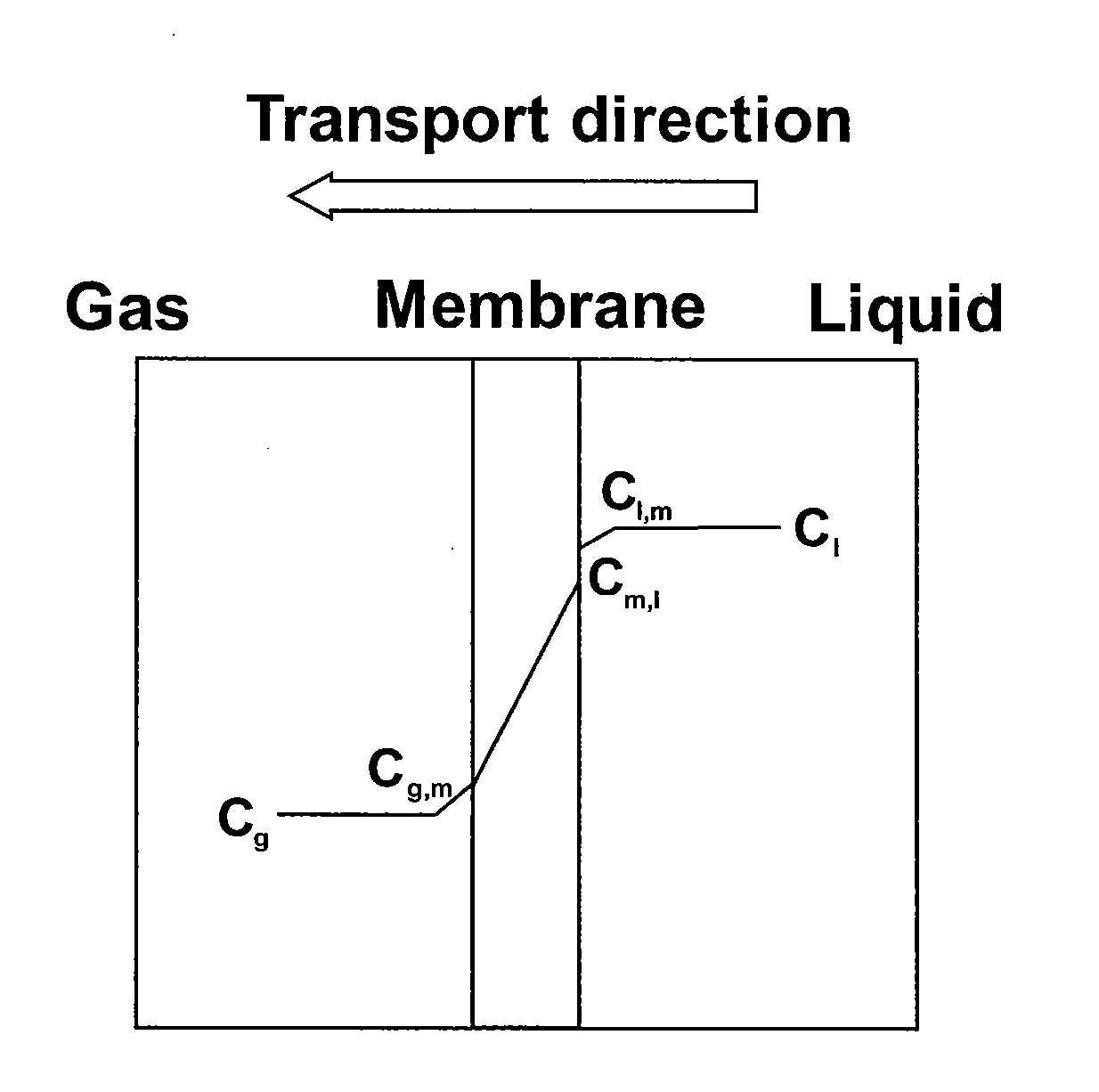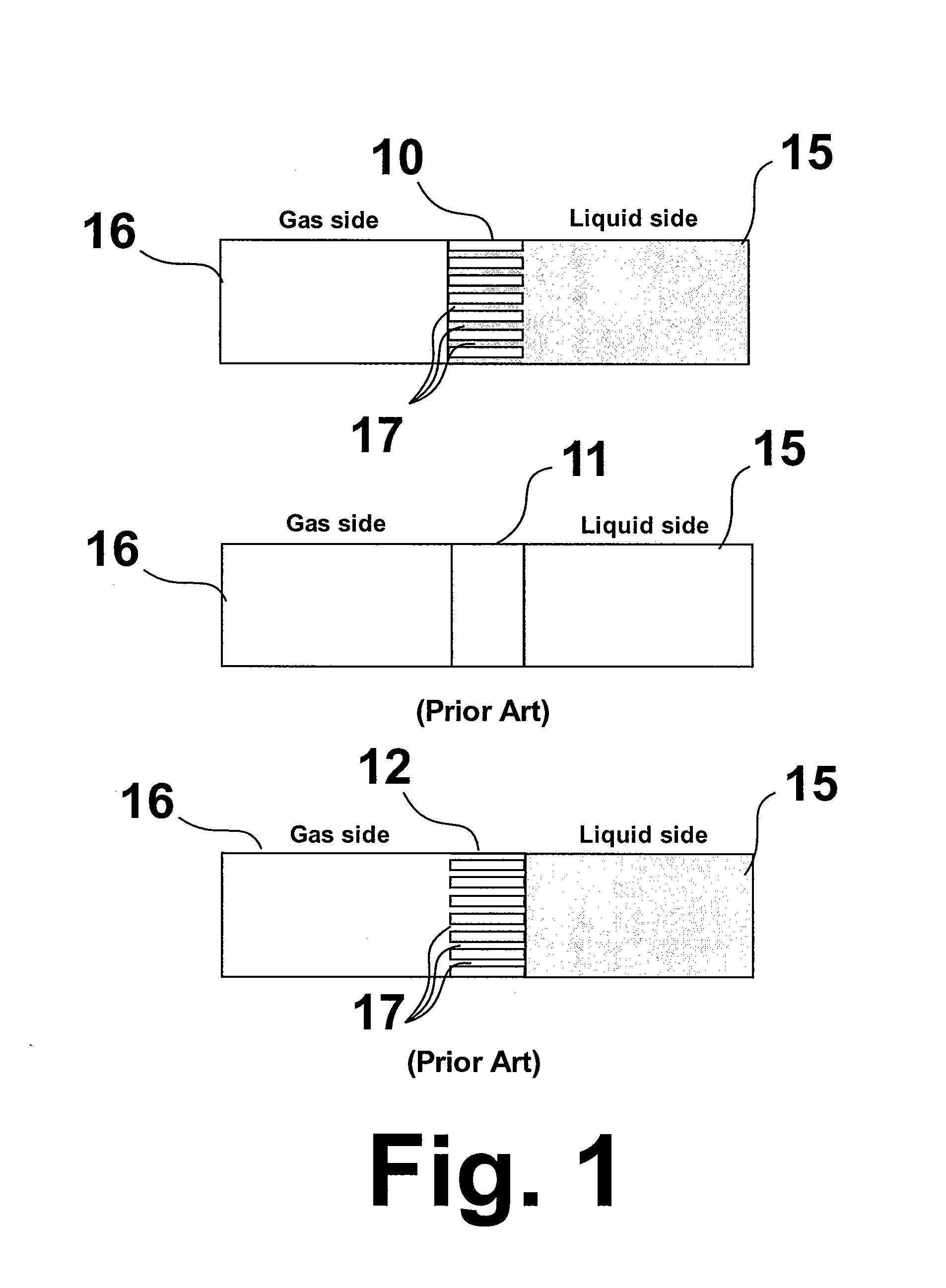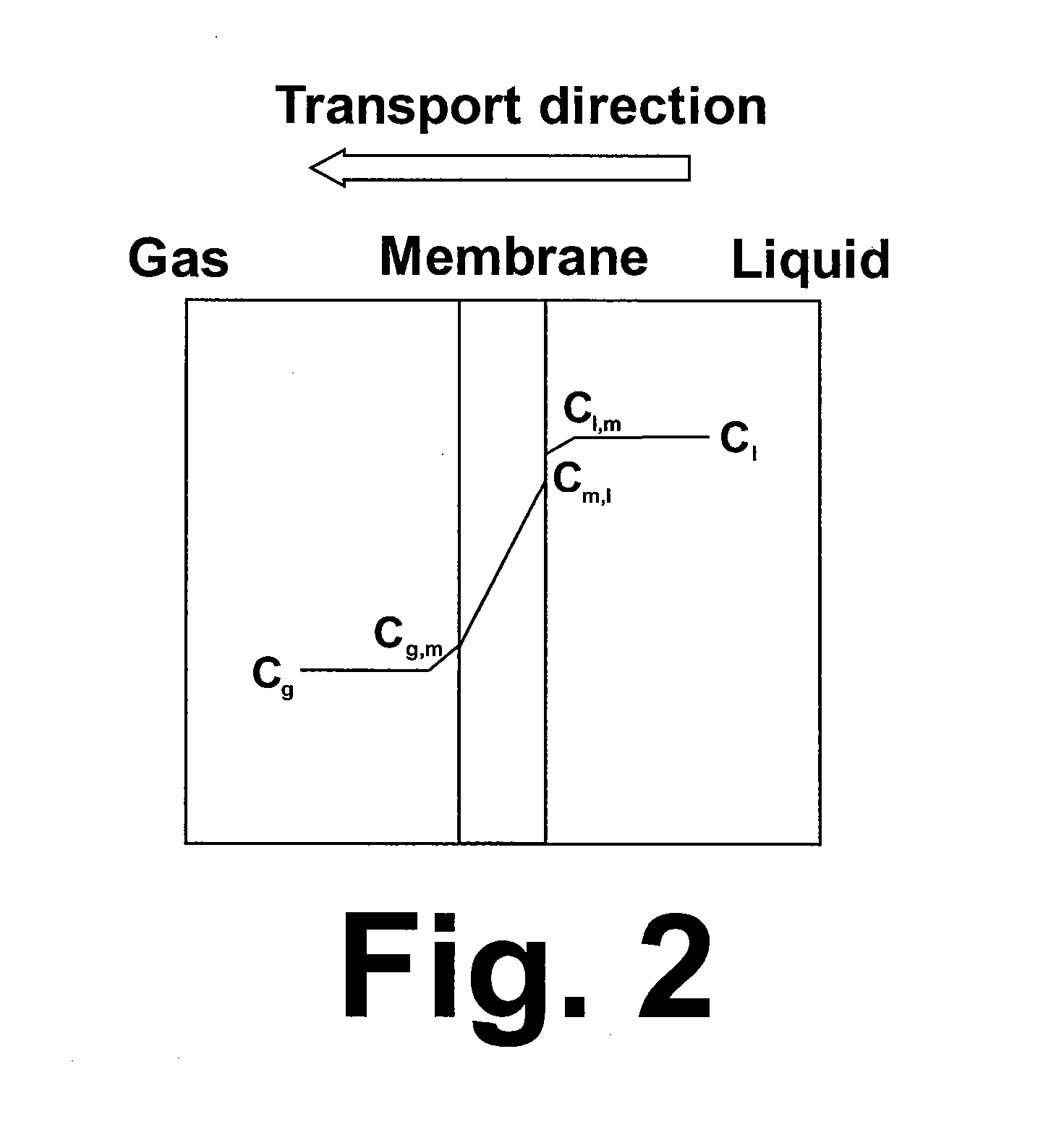Method and apparatus for desorption using a microporous membrane operated in wetted mode
a microporous membrane and wet mode technology, applied in the field of membranes for solvent regeneration and co2 stripping, can solve the problems of limited product cosub>2 /sub>concentration, limited process pressure ratio (feed gas pressure/permeate gas pressure), and limited commercialization of immobilized liquid membranes. achieve the effect of reducing the size of conventional solvent regeneration systems, reducing capital costs and operating costs
- Summary
- Abstract
- Description
- Claims
- Application Information
AI Technical Summary
Benefits of technology
Problems solved by technology
Method used
Image
Examples
example 1
[0024]In this example, CO2-loaded activated methyldiethanolamine (aMDEA) solvent was regenerated using a membrane desorber equipped with hydrophilic nano-porous PEEK hollow fiber membranes. In this process, the CO2-rich solvent was heated and fed to the tube side of the fibers, i.e. into the lumen of the fibers. The tube side was maintained at a higher pressure than the shell side, i.e., the exterior of the fibers. As the rich solvent flowed through the tube side of the membrane, desorbed CO2 permeated through the membrane and was collected at the top of the shell side, and the lean (CO2-depleted) solvent was collected at the distal bottom end of the tube side. During the testing, some lean solvent was also collected at the bottom of the shell side, indicating that the liquid had permeated from the tube side to the shell side as well, and the membrane was wetted during the operation. Table 1 shows the membrane contactor regeneration performance through the module with the gas side p...
example 2
[0025][1] In this example, CO2-loaded activated methyldiethanolamine (aMDEA) solvent was regenerated using a membrane desorber equipped with hydrophilic nano-porous PEEK hollow fiber membranes, the same membrane as in the previous example, but at a higher regeneration temperature and a higher trans-membrane pressure drop. The flow configuration and operating conditions are shown in FIG. 3. At a trans-membrane pressure drop of 75 psi, i.e. feed liquid in tube side at 85 psig and shell side at 10 psig, and an average temperature of 114° C. ((121+107) / 2=114), the CO2 stripping rate was as high as 4.1 kg / m2 / hr. The higher feed liquid side pressures forces the liquid into the pores of the membrane. Contrary to conventional wisdom, the wetted membrane showed a higher mass transfer rate for solvent desorption than would be expected.
[2] In membrane processes, permeance, typically defined in GPU (1 GPU=10−6 cm3 (STP) / (cm2·s·cmHg)), is used to describe pressure normalized flux, a measure of t...
PUM
| Property | Measurement | Unit |
|---|---|---|
| pressure drop | aaaaa | aaaaa |
| pressure | aaaaa | aaaaa |
| pressure | aaaaa | aaaaa |
Abstract
Description
Claims
Application Information
 Login to View More
Login to View More - R&D
- Intellectual Property
- Life Sciences
- Materials
- Tech Scout
- Unparalleled Data Quality
- Higher Quality Content
- 60% Fewer Hallucinations
Browse by: Latest US Patents, China's latest patents, Technical Efficacy Thesaurus, Application Domain, Technology Topic, Popular Technical Reports.
© 2025 PatSnap. All rights reserved.Legal|Privacy policy|Modern Slavery Act Transparency Statement|Sitemap|About US| Contact US: help@patsnap.com



